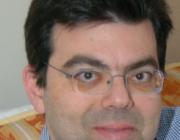Abstract:
BACKGROUND: Cardiac resynchronization therapy (CRT) pacing has been proposed as an additional treatment to medical therapy to improve heart failure patients with left ventricular asynchrony. The aim of this study was to evaluate the influence of CRT treatment on proinflammatory cytokines in patients with heart failure. METHODS: Twenty patients, with a mean age 64 +/- 2 years, with severe chronic heart failure NYHA class II-IV (mean ejection fraction 25 +/- 2%), were included in the study. Patients were treated with CRT pacing, after failure of optimal therapy. Blood samples were taken at baseline, 3 months after pacing therapy, and after a subsequent 3-month period of no pacing for the assessment of proinflammatory cytokines TNF-alpha and its receptors (sTNFR-I, sTNFR-II), IL-6, adhesion molecules sICAM-1 and sVCAM-1, and the apoptotic indices sFas and sFas-Ligand. RESULTS: Levels of TNF-alpha, sTNFR-I, and sTNFR-II were reduced at the end of 3 months of CRT therapy and further reduced at the end of the no pacing period (P < 0.05, compared to baseline). Levels of IL-6 also declined after 3 months of CRT pacing (from 8.9 +/- 2.5 pg/mL to 4.7 +/- 1.3 pg/mL, P < 0.05) and this was maintained during the no pacing period (3.9 +/- 1.1 pg/mL P < 0.05 compared to baseline). The adhesion molecule sICAM-1 levels also reduced (from 265 +/- 17 ng/mL to 235 +/- 12, P < 0.05) after 3 months of CRT pacing and remained unchanged at the end of the no pacing period (219 +/- 12 ng/mL, P < 0.05 compared to baseline values). CONCLUSION: Major proinflammatory cytokines and the adhesion molecule sICAM-1 are reduced with CRT therapy and this effect is maintained for at least 3 months after discontinuation of pacing
Notes:
DA - 20060411
IS - 0147-8389 (Print)
IS - 0147-8389 (Linking)
LA - eng
PT - Journal Article
RN - 0 (Cytokines)
RN - 0 (Inflammation Mediators)
SB - IM
Website

